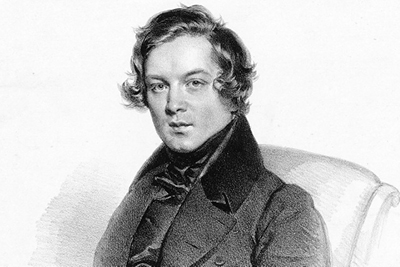
Schumann and Fasching
Fasching is Germany’s long carnival. It starts on the 11th day of November at exactly 11 minutes after 11am and ends at the stroke of midnight on Shrove Tuesday.
Everyone knows about the love affair of Robert and Clara Schumann, celebrated in coded messages in his music. However, before Clara, there was another. In 1834 Schumann became secretly engaged to 16-year-old Ernestine von Fricken and, for her, he wrote Fasching: Schwänke auf vier Noten, based on four musical notes S C H A (German note names for the notes E-flat, C, B, A). These letters spell Ernestine’s place of birth (Asch), appear in Schumann’s name, and in the word Fasching.
When he discovered Ernestine was illegitimate (so would not have a dowry), Schumann slammed on the brakes and began to transfer his affections to the 15-year-old Clara Wieck, his landlord’s daughter and child prodigy.

Five years later, Schumann wrote the first four movements of Faschingsschwank aus Wien (Carnival Jest from Vienna), Op. 26, in Vienna before returning to the Wieck household in Leipzig where he wrote the fifth. The pieces use melodic material based on the same four notes but in various orders. Schumann predicted that “deciphering my masked ball will be a real game for you.”
The road with Clara was a rocky one. She loved Robert but her father didn’t. In 1840, the day before her 21st birthday, the lovers married to start a remarkable musical partnership.


